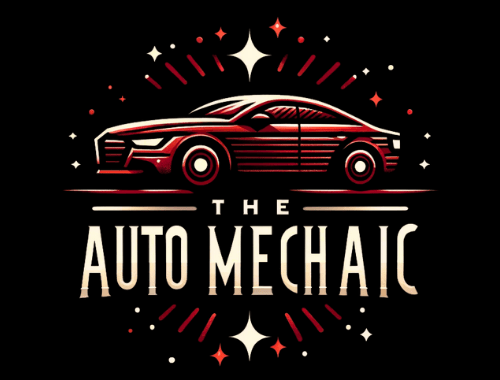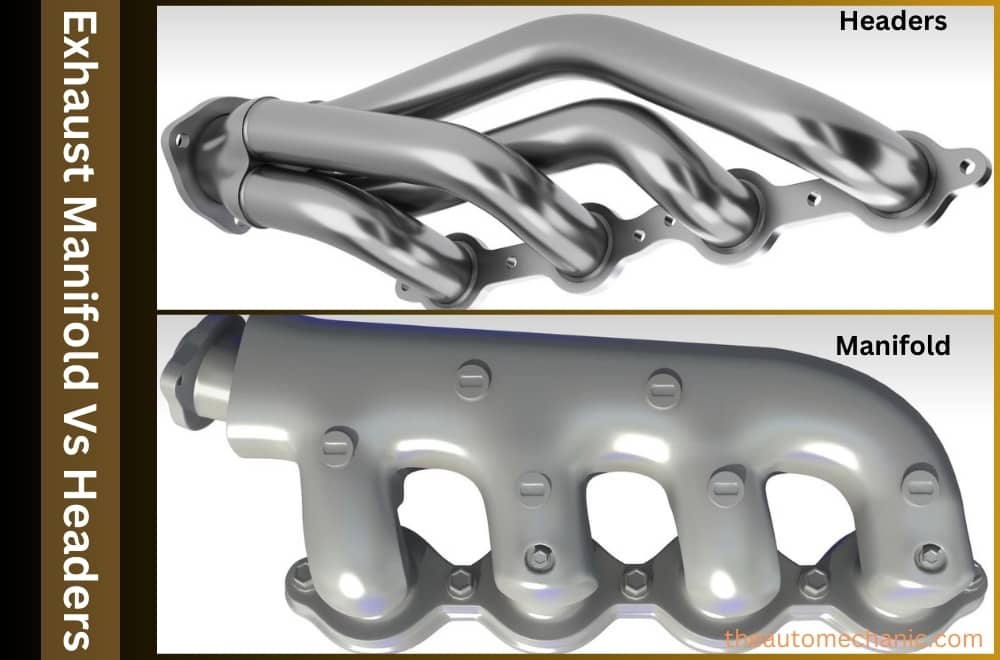All internal combustion engine vehicles run through a complex process to produce energy. They go through the induction process, after which they are compressed. Finally, combustion happens, followed by the exhaust system. The continuous cycle shuts down only when you turn off the ignition.
This guide explains all the differences between exhaust manifolds and headers. It also helps you determine your needs regarding these two!
Distinguishing Exhaust Manifold Vs Headers
We often confuse the exhaust manifold and headers. This is due to the similarities they serve between them.
Manifold is a word that means several inlets and outlets folding together. To explain, we can take a V8 engine. A V8 engine has eight cylinders, each with one outlet. The gases from those eight cylinders feed into one exhaust pipe, so we need an exhaust manifold.
The main purpose of an exhaust manifold is to distribute exhaust gases from the engine into the remaining exhaust system to be expelled. However, there are some key differences between headers and exhaust manifolds.
The most obvious difference between the two is their sound and performance. Therefore, each service offers a unique experience, and it depends on what you want to do with your vehicle.
To understand the need for the right one, you need to know the detailed functionality of Manifolds and headers.
Exhaust Manifold
All exhaust manifolds are made out of cast iron. Cast iron is extremely durable and can withstand severe heat and pressure. However, the downside of cast iron is cracking.
Most vehicles are equipped with factory-installed exhaust manifolds, which are much thicker, stronger, and more durable. However, the thick walls reduce the empty space inside the manifold, which hinders the exhaust gases from passing through.
Further, iron castings aren’t the smoothest. Therefore, the rough surface also reduces the smooth flow of the exhaust gas.
Moreover, the slow gas flow might create back pressure, which reduces efficiency. Combined with all the downsides, horsepower could be reduced. All these might also lead to a lower fresh air intake.
Pros
- Great heat absorption
- Reduction in emission
- Retains noise
- Less expensive
Cons
- Congested area for air passage
- Thick walls reduce airflow
Headers
People often install headers as aftermarket parts on their vehicles. Headers are constructed using stainless steel, highly resistant to heat and pressure. The smooth body of stainless steel enables smooth air to exit out of the exhaust.
The header tubes are connected to the collector pipe, which is identical in length and uniform. This pipe ensures that the exhaust gases reach the collector individually from the cylinders.
You should ensure that the pipes aren’t constricted, which damages the purpose. Moreover, the vehicle will perform much better if everything is fitted properly.
However, the downside of the header is its thin walls. Yes, they improve airflow, but they worsen the sound experience because they fail to absorb as much sound as the manifold’s thick wall. However, you will love it if you love to hear engine noise.
Headers come in painted looks, ceramic coated, chrome coated, or even not coated at all. However, you should not purchase uncoated headers, as they will rust over time. Further, ceramic-coated headers are the most durable due to their rust protection characteristics.
Pros
- No manifold backpressure
- Performance bump
- Impeccable for turbo engine cars
- Good for high revs
Cons
- Less sound-absorbing capability
- Problematic with constricted collector pipe
The Different Types of Headers
There are different types of headers, so you must get the right one for your vehicle. Further, different types of headers offer different performance.
Short Headers
Short headers are perfect for cursing at the mid-rpm. This is best for daily driving your vehicle with a bump in performance. Moreover, you can go for an equal-length header or an unequal-length header.
The equal length provides impeccable performance throughout. However, the unequal header produces deep engine sounds and much lower torque.
Even though short headers are good for turbo engine vehicles, they are not ideal for high revs.
Long Headers
The long tube headers are best for revs. They are impeccable for medium to high-range revs. However, changing to long headers might change the factory-built manifold, the downpipe, and the catalytic converter, making it expensive.
If you like the engine’s exhaust sound, you should choose the long header manifold. However, the installation process is very tough. Further, if you have the factory catalytic converter, your car will show an engine light.
Sound Of Exhaust Manifold Vs Headers
The debate between Exhaust manifold and headers can be sorted according to your preference.
If you love the factory-built sound system, stick with the exhaust manifold. The manifold’s thick wall absorbs most of the sound.
However, if you love to hear the exhaust sound, you must go for the headers. The header offers thin tubes, thin walls, and collector pipes. The thin wall absorbs less sound. Therefore, you can hear much louder exhaust roars.
Moreover, the header also increases vehicle performance and eliminates backpressure issues. This is due to the thinner walls, which allow more exhaust gases.
Conclusion
Now you know all about Exhaust Manifolds vs. headers. Exhaust manifolds are more of an OEM thing. They produce less power than headers. Further, the thicker wall dampens the exhaust sound. Therefore, you will be satisfied with the exhaust manifold if you love the OEM sound of your vehicle.
On the other hand, there are headers. These are much louder than the manifold and eliminate the exhaust back pressure issue due to the thinner walls. Moreover, you will also notice much higher performance due to proper airflow from the exhaust system.
However, installing the long tube headers is a headache as you need to replace the OEM catalytic converter. Moreover, it might trigger the check engine light and is a hassle.
Therefore, it is your preference whether to keep everything OEM or modify it with aftermarket parts.

Bruce William is a professional content writer and vehicle engineer with extensive car maintenance and repair knowledge. His expertise spans all vehicle parts, offering practical solutions for various automotive issues. Bruce provides valuable insights through his website articles to help readers maintain their cars for optimal performance and longevity.

